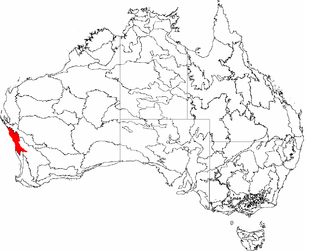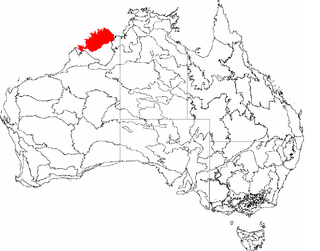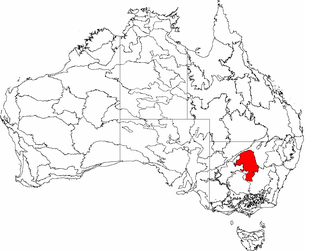
Carnarvon is an Australian bioregion in Western Australia. [1] [2] This area is also referred to physiographically as the Carnarvon Basin, where it is a physiographic province of the larger West Australian Shield division.
A bioregion is an ecologically and geographically defined area that is smaller than an ecozone, but larger than an ecoregion or an ecosystem, in the World Wildlife Fund classification scheme. There is also an attempt to use the term in a rank-less generalist sense, similar to the terms "biogeographic area" or "biogeographic unit".

Western Australia is a state occupying the entire western third of Australia. It is bounded by the Indian Ocean to the north and west, and the Southern Ocean to the south, the Northern Territory to the north-east, and South Australia to the south-east. Western Australia is Australia's largest state, with a total land area of 2,529,875 square kilometres, and the second-largest country subdivision in the world, surpassed only by Russia's Sakha Republic. The state has about 2.6 million inhabitants – around 11 percent of the national total – of whom the vast majority live in the south-west corner, 79 per cent of the population living in the Perth area, leaving the remainder of the state sparsely populated.
The Carnarvon Basin is a geological basin located in the north west of Western Australia. This is the main geological feature that makes up the North West Shelf. The onshore part of the Carnarvon Basin covers about 115,000 km² and the offshore part covers approximately 535,000 km² with water depths up to 3,500 metres. It is separated into two major areas - the Northern Carnarvon Basin, and the Southern Carnarvon Basin.
It has two sub regions:
- Wooramel, which is a significant part of the Shark Bay World Heritage area [3]
- Cape Range





















